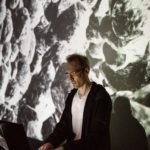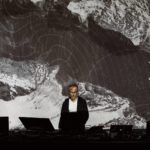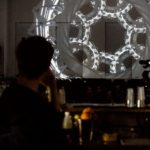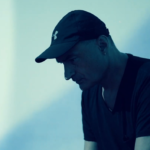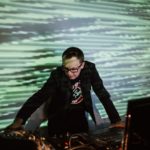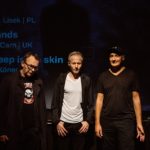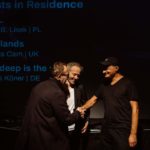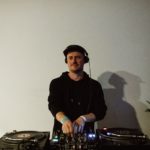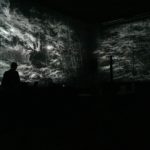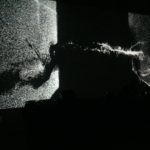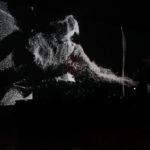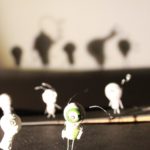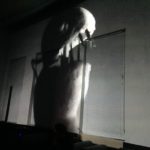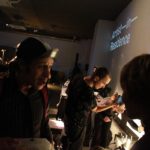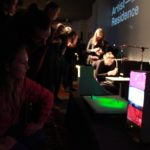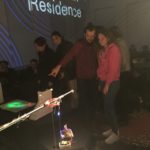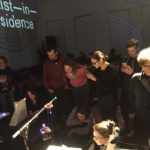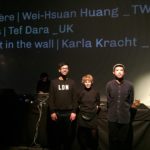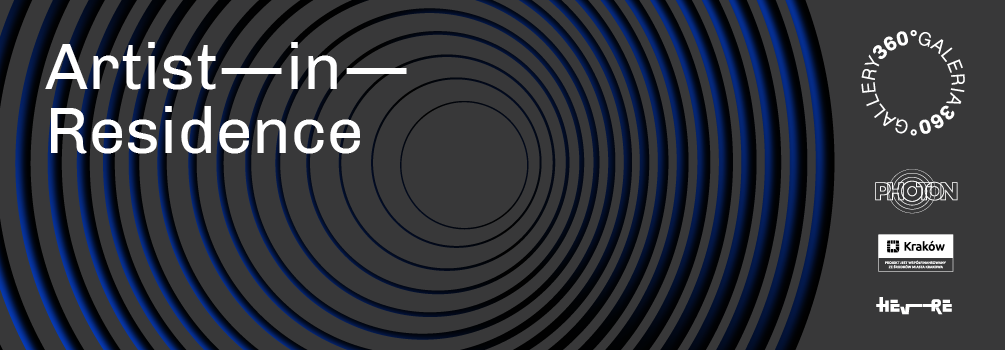
REZYDENCJE ARTYSTYCZNE W GALERII 360° (2019)
ARTISTS IN RESIDENCE AT THE 360° GALLERY (2019) (for English scroll down)
“I had a great experience in Krakow on the residency and at Patchlab Festival, the team provided great technical support for the project. It was also valuable to discuss our art practices with the other artists. The Photon team are very welcoming and I hope I get the opportunity to perform again at the 360 gallery in the future.” – Nicolas Carn (UK) AiR #2 2019
W wyniku otwartego naboru, ogłoszonego w maju 2019, na rezydencje artystyczne w Galerii 360° wyłonionych zostało 6 artystów, którzy podczas 7-dniowej rezydencji miało możliwość pracy na innowacyjnym systemie projekcyjnym Galerii 360° w przestrzeni Hevre+1 w centrum dzielnicy Kazimierz przy ul. Beera Meiselsa 18 w Krakowie. Specyfikacja systemu znajduje się tutaj.
Celem rezydencji było stworzenie autorskich projektów audiowizualnych dedykowanych na system projekcyjny Galerii 360°, które były prezentowane publicznie jako zwieńczenie rezydencji.
W czasie rezydencji odbyły się także spotkania z artystami na Akademii Sztuk Pięknych na Wydziale Intermediów (1 edycja) i Akademii Muzycznej (2 edycja), podczas których rezydenci prezentowali projekty, nad którymi pracowali.
- 1 edycja : 20-28.10.2019 / pokazy efektów odbyły się w czasie Festiwalu Sztuki Cyfrowej Patchlab
1/ Most deep is the skin, Thomas Köner (Niemcy)
Thomas Köner jest artystą multimedialnym, którego głównym zainteresowaniem jest łączenie wrażeń wizualnych i słuchowych. W swoim ponad trzydziestoletnim dorobku artystycznym Thomas zdążył wystąpić i tworzyć dzieła w tak ważnych ośrodkach jak paryskie Audytorium w Luwrze i Centre Pompidou czy Muzeum Sztuki Współczesnej w Montrealu. Podczas rezydencji w Galerii 360° artysta stworzył immersyjny, ambientowy projekt audiowizualny, oparty o subiektywne i emocjonalne doświadczenia.
2/ Otherlands, Nicholas Carn (UK)
Nicholas Carn podczas rezydencji pracował nad materiałem audiowizualnym bazującym na danych dotyczących zmian klimatu i wpływu działalności człowieka na planetę z perspektywy post-ludzkiej. Wykorzystał technikę sonifikacji i wizualizacji danych, informacje dotyczące np. wzrostu temperatury, wzrostu poziomu CO2 w atmosferze, topnienia lodu lądowego i wzrostu poziomu mórz, które posłużyły mu jako wytyczne projektowania dźwięku i obrazów. Nicholas korzystał z technik kompozytorskich zmanipulowanych algorytmami reaktywnymi audio oraz materiałów wizualnych Open Source Nasa.gov, które stały się podstawą do animacji i klipów wideo z generowaną grafiką 3D.
3/ Sibyl, Robert B. Lisek (Polska)
Robert Lisek pracował nad projektem opartym o sztuczną inteligencję, który tworzy narracje i kompozycje muzyczne testując nowe metody generowania muzyki, opowiadań i nowych rodzajów audiowizualnych działań poprzez interakcje z autonomicznym agentem AI. Uczy się w oparciu o techniki komponowania muzyki i pisania takich twórców jak Pynchon, Burroughs, Gibson i Xenakis, wykorzystując rekurencyjne sieci neuronowe, uczenie maszynowe i analogowe syntezatory dźwięku i obrazu.
- 2 edycja: 30.11 – 07.12.2019
1/ Lumière, Wei-Hsuan Huang (Tajwan)
Projekt stworzony za pomocą fotogrametrii, czyli trójwymiarowego skanowania przestrzeni, podejmujący temat rekonstrukcji przestrzeni z przeszłości, architektury, jej historii i dokumentacji cyfrowej. Podczas rezydencji artysta tworzy projekt na bazie skanów 3D wykonanych w przestrzeni Krakowa.
2/ Iners, Dara Etefaghi (UK)
Koncert audiowizualny komponowany w czasie rzeczywistym, łączący estetykę obrazu generatywnego z nie linearną narracją. Twórca gromadzi i wytwarza byty audiowizualne za pomocą systemu zbliżonego do używanego do kreacji gier komputerowych, który umożliwia łączenie jednostek muzycznych w określonych konfiguracjach.
3/ Ghost in the wall, Karla Kracht (Hiszpania)
Oniryczny live cinema performens na cienie, duchy i potwory, inspirowany podróżami do Tajwanu i tajwańskim tzw. głodnym miesiącem duchów, podczas którego świat duchów zazębia się ze światem ludzi. Karla wykorzystuje w swoim projekcie ruchome przedmioty i postaci rozmieszczone w przestrzeni, ich cienie, oraz materiał filmowy z wielu kamer, przetworzony i wyświetlony w czasie rzeczywistym. Całość tworzy mroczny spektakl wprost ze świata lęków, snów i duchów.
Organizatorem rezydencji artystycznych i pokazów projektów audiowizualnych jest Fundacja Photon z siedzibą w Krakowie.
Partnerem programu jest Hevre.
Program rezydencji artystycznych AiR i pokazów projektów audiowizualnych dofinansowany jest ze środków miejskich Gminy Kraków.
Treść ogłoszenia rezultatów naboru na rezydencje artystyczne w Galerii 360° z dnia 24.08.2019
Treść ogłoszenia otwartego naboru na rezydencje artystyczne w Galerii 360° z dnia 22.05.2019.
ENG
ARTISTS IN RESIDENCE AT THE 360° GALLERY
As a result of an open call, announced in May 2019, for the Artist in Residence program at the 360 ° Gallery, 6 selected artists had an opportunity to work during a 7-day residence on the innovative projection system of the 360° Gallery in the Hevre+1 space in the center of the Kazimierz district at Beera Meiselsa 18 street in Krakow. The system specification can be found here.
The aim of the residence was to create original audiovisual projects dedicated to the 360° Gallery projection system, which was presented live at the end of the residence.
During the residency, meetings were also held with artists at the Academy of Fine Arts at the Faculty of Intermedia (1st edition) and the Academy of Music (2nd edition), during which residents presented projects they were working on.
- 1st edition : 20-28.10. 2019 / The final presentation took place during the Patchlab Digital Art Festival
1/ Most deep is the skin, Thomas Köner (Germany)
Thomas Köner is a multimedia artist, interested in combining visual and auditory impressions. In his more than thirty years of artistic achievements, Thomas managed to develop and create works in such active services as the Paris Auditorium at the Louvre and Pompidou Center or the Museum of Contemporary Art in Montreal. During his residency at the 360 ° Gallery, the artist prepared an immersive, ambient based audiovisual project rooted in the artist’s subjective and emotional experience.
2/ Otherlands, Nicholas Carn (UK)
During his residency, Nicholas Carn worked on audiovisual material based on data on climate change and the impact of human activities on the planet from a post-human perspective. Sonification and data visualization techniques, information on e.g. temperature rise, atmospheric CO2 increase, land ice melting and sea level rise, served as guidelines for sound and image design. Nicholas used composer techniques manipulated with reactive audio algorithms and Nasa.gov Open Source visual materials, which will become the basis for animations and video clips with generated 3D graphics.
3/ Sibyl, Robert B. Lisek (Poland)
Robert Lisek worked on a project based on artificial intelligence, which creates narratives and musical compositions by testing new methods of generating music, stories and new types of audiovisual activities through interaction with an autonomous AI agent. He learns based on the techniques of composing music and writing such artists as Pynchon, Burroughs, Gibson and Xenakis, utilizing recursive neural networks, machine learning and analogue sound and image synthesizers.
- 2nd edition: 30.11 – 07.12.2019
1/ Lumière, Wei-Hsuan Huang (Taiwan)
The project was created using photogrammetry, i.e. three-dimensional space scanning, addressing the topic of reconstruction of space from the past, architecture, its history and digital documentation. During the residency, the artist creates a project based on 3D scans made in the space of Krakow.
2/ Iners, Dara Etefaghi (UK)
A real-time audiovisual concert combining the aesthetics of a generative image with non-linear narration. The creator collects and produces audiovisual beings using a system similar to the one used for the creation of computer games, which allows to combine music units in specific configurations.
3/ Ghost in the wall, Karla Kracht (Spain)
Oneiric live cinema performance on shadows, ghosts and monsters, inspired by travels to Taiwan and the Taiwanese so-called hungry ghost month, during which the world of ghosts meshes with the world of people. Humans live in function of the ghosts’ desires and lunatic demands and even change their habits and are restricted in their actions. Karla uses moving objects and figures arranged in space, their shadows, and film material from many cameras, processed and displayed in real time. The whole creates a dark spectacle straight from the world of fears, dreams and ghosts.
The organizer of artistic residencies and shows of audiovisual projects is the Photon Foundation based in Krakow.
The partner of the program is Hevre.
The AiR artistic residency program and audiovisual project shows are co-financed from the municipal funds of the Kraków City.
The announcement of the results of the AiR at the 360° Gallery from 24.08.2019
The announcement of the open call for Artist in Residence on 22.05.2019.

